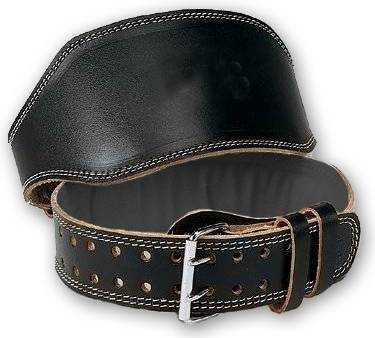Take care of your back, and your back will take care of you. This is a good maxim to live by for athletes and non-athletes alike and one tool that sometimes comes in handy is a quality Lifting Belt.
Who has your Back?
For any of you who may doubt the importance of a lifting belt, let me venture to guess that you have never suffered from back trouble of any kind. Essentially, the back is a complex network of muscles extended across the spine, and an injury can cause sharp pain from even slight movements.
Back injuries are notoriously difficult to rehab and can cause prolonged problems even after recovery. Numerous famous athletes have retired due to nagging back problems, including baseball’s Don Mattingly and basketball’s Tracy McGrady.
Other possible injuries
In weightlifting, proper form is the cornerstone to avoiding injury, and even with this a lifter can easily suffer a pulled muscle in any number of areas across the back. Avoiding hernia is also a chief concern for lifters.
Lifting belt, the support you need

For anyone who had ever suffered nagging back trouble of any kind, a lifting belt can be a very wise investment. It at least encourages the lifter to keep the back straight and provides some important support across the lumbar region.
Of course, merely wearing a lifting belt is no guarantee of good form in itself. If you have previously sustained an injury, lifting without a belt can cause you to compensate for the lingering effects of the back injury, resulting in poor form and the increased likelihood of further injury. The support provided can encourage you maintain proper form and preserve your back.
Stretching before and after workouts is also a crucial step in maintaining your body through the sustained exertion.
That being said, if you have never sustained a back injury of any kind, it may be a good idea to go without a lifting belt. Wearing a belt compresses and abdomen and alters mechanics slightly as the waist is more rigid. Because of this compression, a lifting injury can actually be made more severe due to the presence of a weight belt.
Our thoughts
Nevertheless, don’t think for a moment that a lifting belt can prevent you from hyper-extending your back or can lessen the injury caused by that. The weight belt is merely another tool to aid you in the safe and effective practice of lifting weights.
While you should never attempt to lift more than you are comfortable with, using a lifting belt can help you to step it up by a few more pounds or kilograms. This is due to the compression of the muscles in the abdomen, which has the effect of focusing the strength generated for the core area.
A similar effect can be seen from using certain lifting vests that are on the market, but these are not permitted on Olympic competition.
Closing
All in all, lifting belts fall into a larger category of equipment that you should take time to familiarize yourself with and review. Belts are just one among an array of tools at a weightlifter’s disposal.
Belts can be combined with special raised-heel lifting shoes (read our weightlifting shoes reviews), knee sleeves, wrist supports, chalk and lifting straps to optimize a lifter’s performance. Everyone is different and employing some of this equipment can keep you happy and healthy as progress through your lifting regimen.
Remember, while many belts are long on style, lifting belts are long on substance. In the right circumstance, they have the power to help you rack up the bumper plates with the big boys.
In our next article we focus on Understanding the Olympic Snatch. One of the two primary lifts of the sport of Olympic Weight lifting.
